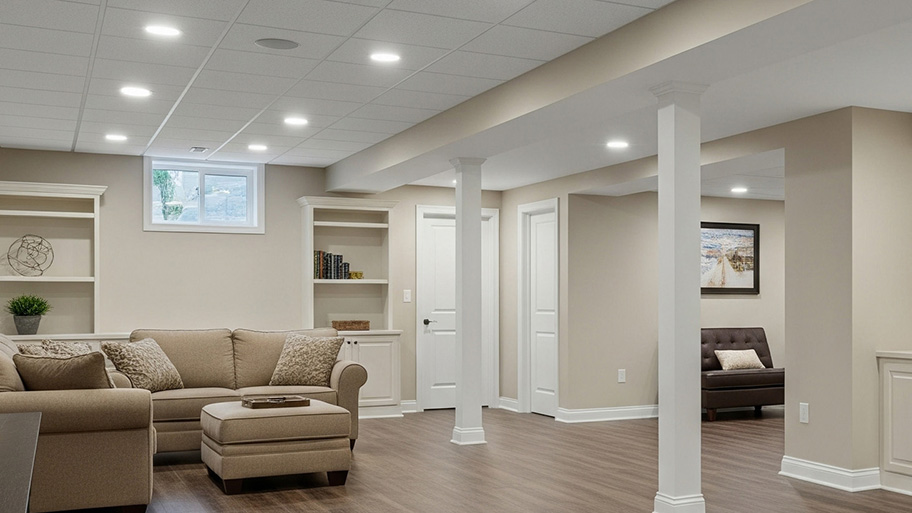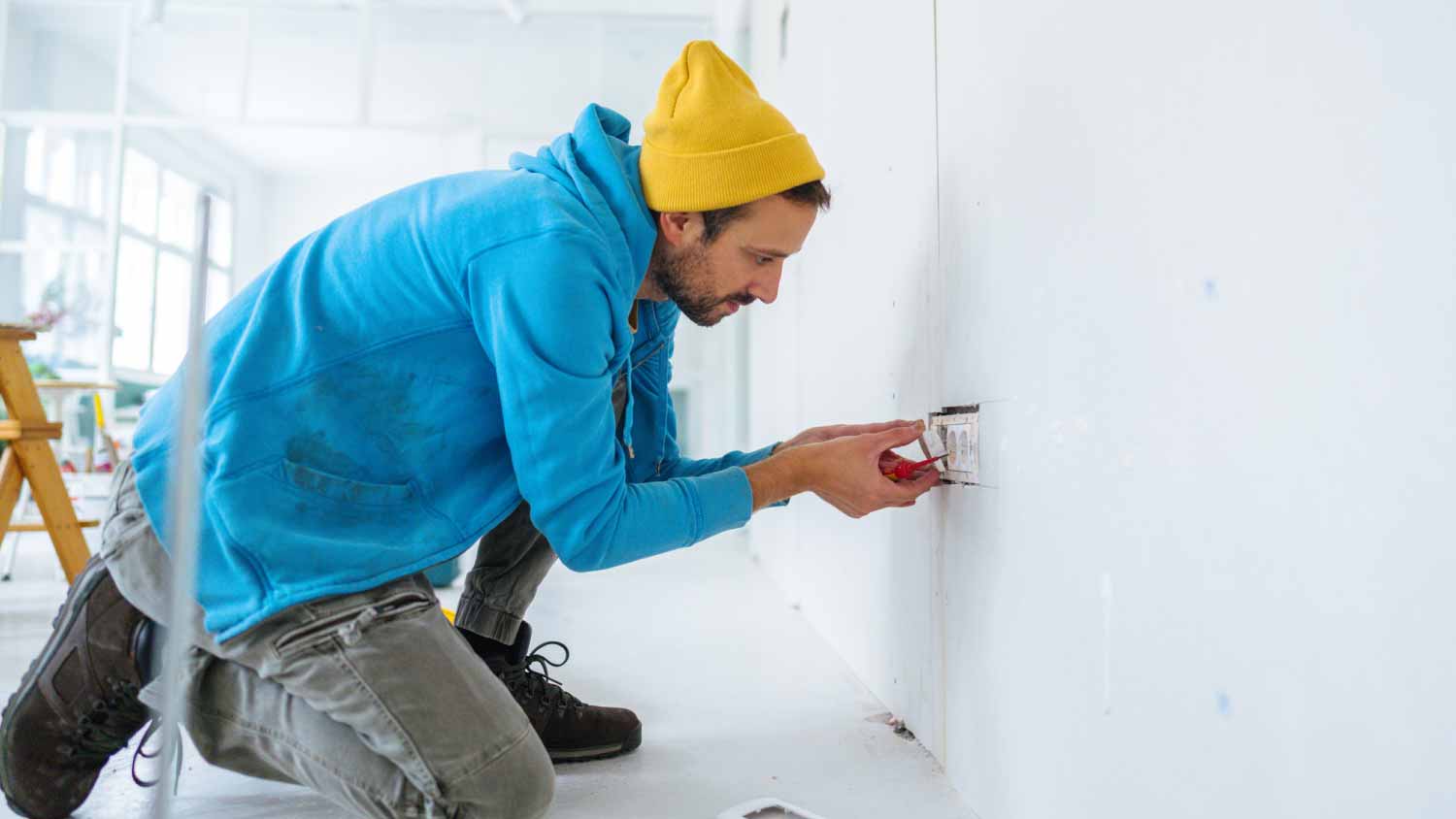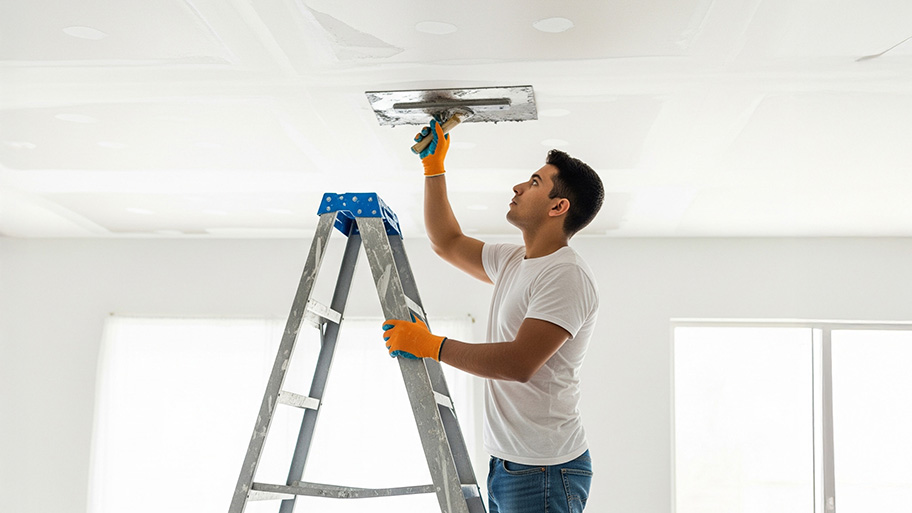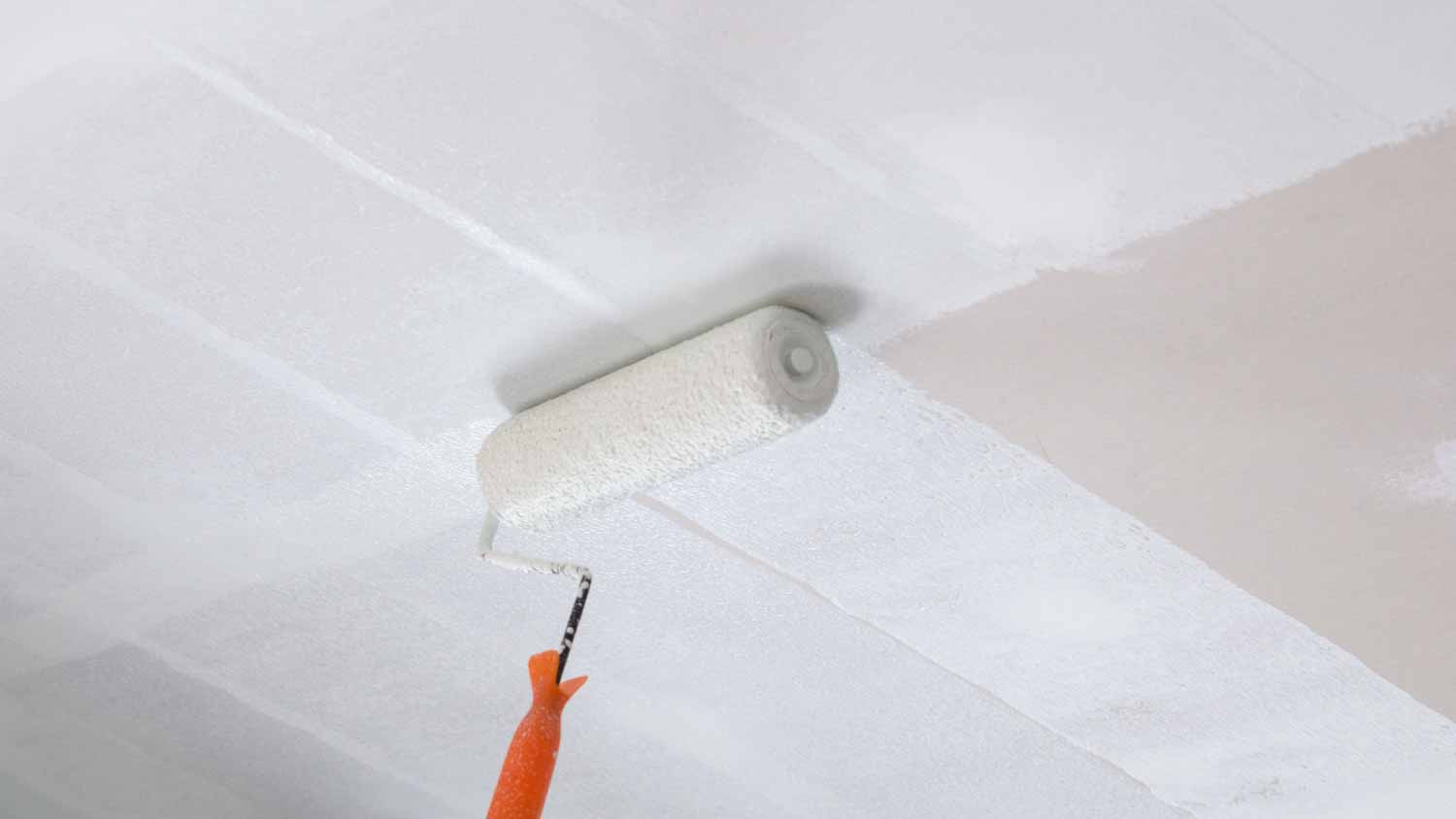
Drop ceilings are an affordable way to finish your room while maintaining access to utilities. Use this drop ceiling cost guide to estimate your project total.
Search for studs with these simple tricks


A stud finder isn’t always effective on a plaster wall, so the process of finding a wall stud can be difficult.
Plaster walls aren’t strong enough to hold heavy items on their own, and damage is expensive to repair. Plaster repairs cost $2,000 to $7,200, on average.
A plaster repair pro can hang up your decor properly and keep your plaster wall in tip-top shape.
If you have plaster walls, hanging heavy objects—like shelves, mirrors, and TVs—requires a bit of prep work. Specifically, you’ll need to locate a wall stud so that you can securely hang your item without worrying that it will come crashing down later. Not sure where to start? Here’s how to find a stud in a plaster wall in four different ways.
Wall studs are vertical pieces of timber that frame a house and support the walls. They sit 16 inches or 24 inches apart from each other, but in older homes, these distances aren’t always consistent.
On their own, plaster walls aren’t strong enough to hold heavy objects (like artwork, mirrors, or TVs). Instead, you should secure these items to at least one stud, which can support more weight than the wall by itself.
When you’re trying to find a stud behind drywall, using an electronic stud finder is the most reliable (and easiest) method. Unfortunately, stud finders aren’t always effective on lath and plaster walls. That’s because—unlike drywall—plaster walls don’t have a consistent density (and electronic stud finders work by identifying changes in a wall’s density).

While stud finders aren’t a great option, there are plenty of other ways to find a stud in a plaster wall, including knocking on the wall, measuring out from light switches or power outlets, using a magnet, and using a metal detector.
Whether you’re dealing with plaster or drywall, knocking on the wall is an easy (but surprisingly effective) technique to find studs in walls. To try it, lightly knock your knuckles along the wall, moving horizontally. When you knock on a section of wall without a stud, it will sound hollow. But when you reach a stud, you should hear a more solid sound.
You can also use light switches and power outlets to locate studs in plaster walls. That’s because electrical boxes, which house the wiring for switches and outlets, are often attached to studs. Here’s how to do it:
Turn off the power at the breaker box.
Remove the plate from the switch or outlet.
Look inside for a vertical wood beam (that’s the wall stud).
To locate the next stud:
Measure 16 inches and 24 inches away from the first stud.
Mark the wall in both locations.
Knock on the wall in both spots and listen for the one that sounds more solid.
Your walls and studs are held together with metal nails, which you can often locate with a magnet. To use this method:
Tie a strong magnet to a piece of string or dental floss. (A flimsy fridge magnet won’t work, so make sure to use a strong one.)
Drag the magnet horizontally along the wall.
When you approach a stud, the magnet should stick to the wall. Mark the location.
To find additional studs, measure 16 inches and 24 inches away from the spot. Tap against the wall in both places to find the more solid-sounding spot.
A word of caution: Magnets may be attracted to any metal in your wall, including electrical or plumbing components. To check if you’ve actually found a stud, you should use another technique (like knocking or measuring from an electrical box) along with this one.
If you have a handheld metal detector, you can hold it against the wall to find nails in the studs. It’s the same process as using a magnet—except the device will beep when it detects metal (instead of sticking to the wall).
Like magnets, metal detectors can also pick up other types of metal in your walls. Before you nail or screw anything into the wall, confirm that you’ve found a stud by using one of the other methods listed above.
Whether you’re installing a pair of floating shelves or mounting a TV, there are a few important tips to keep in mind when hanging things on plaster walls.
Consider adhesive hooks for lighter objects: If the item only weighs a few pounds, think about hanging it on an adhesive hook. That way, you don’t have to bother with finding studs or putting holes in the plaster.
Use sturdy hardware for heavier items: It’s best to attach heavier objects to wall studs. But if that’s not an option, make sure to use sturdier hardware—like plaster hooks or anchors—to secure items to the wall.
Hire a professional for large or delicate items: If you need to mount a TV or hang a heavy mirror on a plaster wall, consider hiring a pro. They’ll know where to place the item, what hardware to use, and how to prevent it from damaging your wall.
If you’re struggling to find any wall studs, you can call a plaster repair pro near you. As experts in all things plaster, these professionals have the right tools for locating studs. They can also help with other plaster-related projects, like repairing cracks in plaster or replastering a wall.
On average, plaster repair costs $2,000 to $7,200, depending on the size of the area, materials, labor costs, and several other factors. So, you definitely want to make sure you find a stud and correctly hang your items the first time.
From average costs to expert advice, get all the answers you need to get your job done.

Drop ceilings are an affordable way to finish your room while maintaining access to utilities. Use this drop ceiling cost guide to estimate your project total.

A ceiling repair averages about $1,000, but multiple factors affect this number. Learn more about creating an accurate ceiling repair cost estimate with our tips.

Venetian plaster can add depth and texture to your aesthetic. Learn how much Venetian plaster costs based on factors like square footage and whether you hire a pro to help.

Many homeowners want to remove popcorn ceilings, but you and your pro will need to discuss a few key popcorn ceiling questions first.

Applying the right amount of mist coat extends the life of your paint. But how many times should you mist coat new plaster? Find out with this guide.

Hairline cracks and spiderweb cracks are just two of many types of ceiling cracks. Read this guide to learn which ceiling cracks are serious and need repairs.